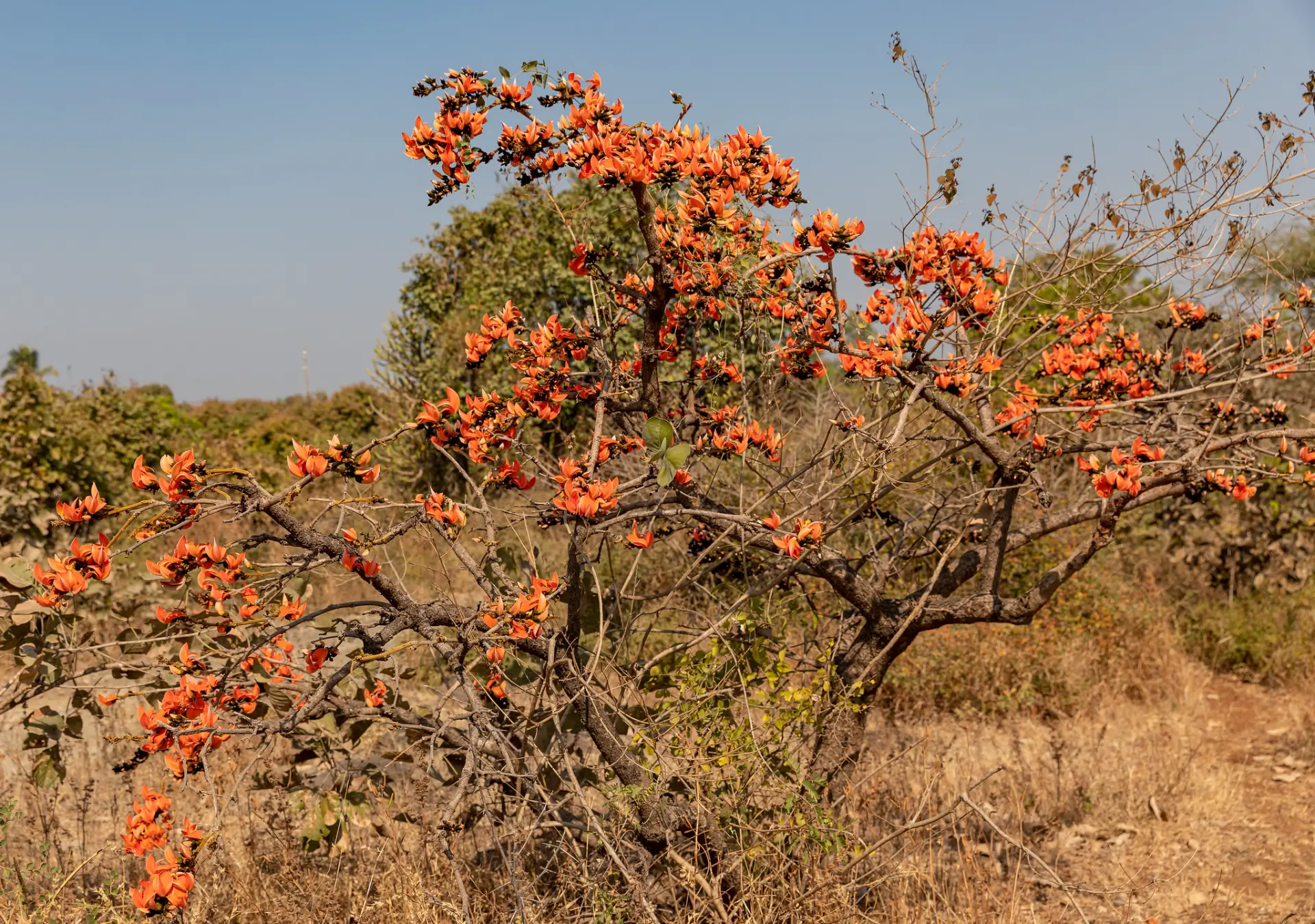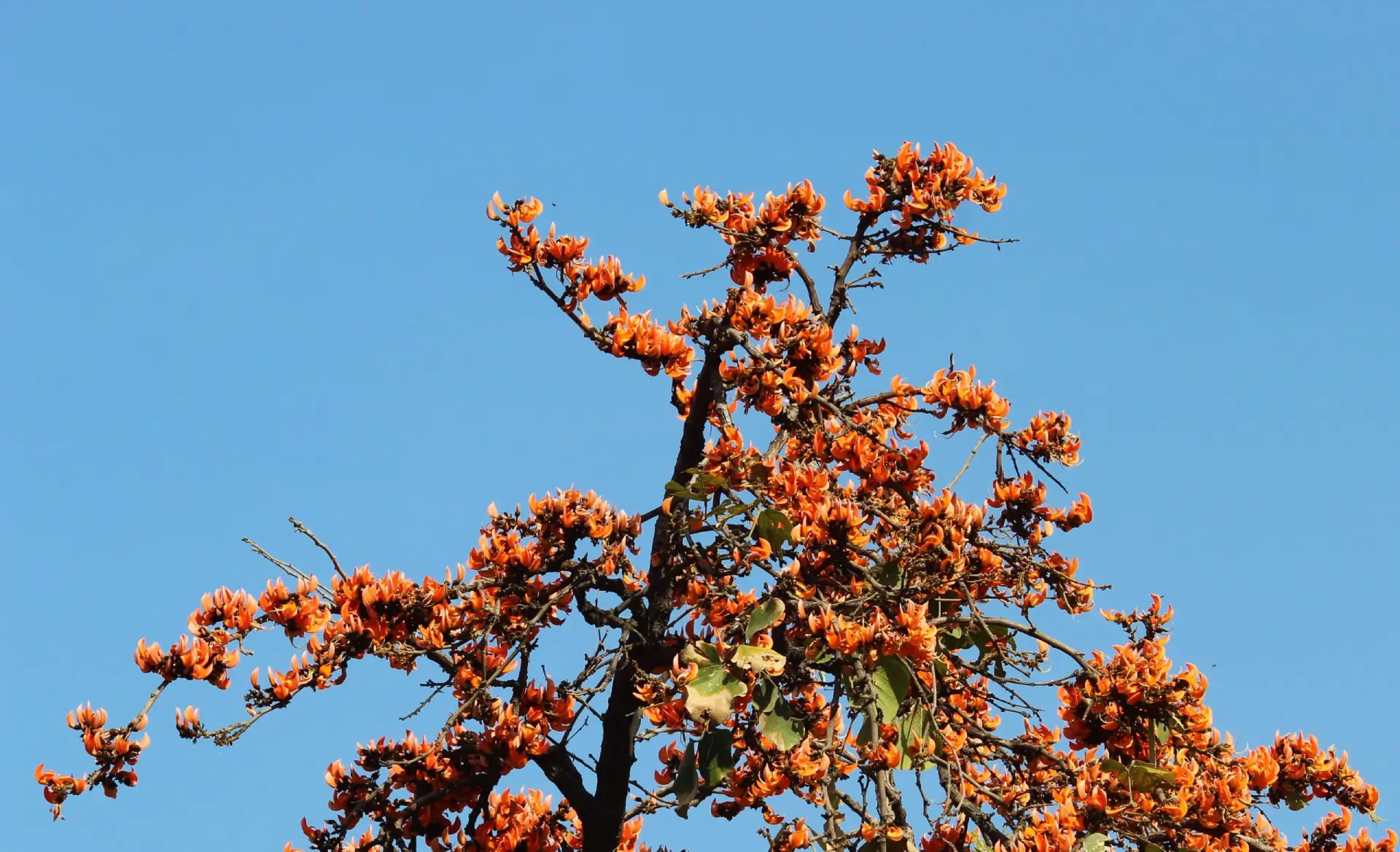

Flora In Gir
National Park
Latest Update : For the upcoming season 2025/26, safari bookings are open for Gir National Park. Always book your safari in advance.
Gir National Park is among the best national parks in India recognised for incredible flora and fauna. The park has a rich and diverse flora with over 400 plant species comprising the dry and mixed deciduous forest, characterized by the trees with broad leaves that fall during the dry season. It also is intertwined with several semi-evergreen and evergreen trees spread sparsely. Further, the forest has scrub jungle, large grasslands, and rocky hills. However, the forest remains dry most of the time in a year with scrub trees like babul and a few flowering trees. This variety of plant life creates an ideal habitat for the park's famed Asiatic lions and other wildlife.
The vegetation along the main river streams includes deciduous ones like Teak in abundance along with Acacia, Banyan, Zizyphas, Jamun, Tendu, and Dhak. Teak covers almost half of the tree population, the reason for the name "Very Dry Teak Forest" given to Gir Forest National Park. The other half population that is significantly evergreen and broad-leafed in the forest includes Simal, Samai, Khakhro, Asundro Jambu, Umro, Amli, Vad, and kalam entwined with Jambu, Karanj, Umro, Vad, Kalam, Charal, Siris, and Amli. The moist region provided by the shading of these broad-leafed trees supports various other life in the forest.
The forest's star-land area, Grasslands are another major part that could be included in savanna-type vegetation. These areas are significant for providing grazing ground to the herbivores, vantage points to the predators and also for important biological research conducted by naturalists. There are also several year-round and non-perennial rivers flowing in the park providing good nourishment for the growth of a variety of flora in the Sasan Gir National Park.


